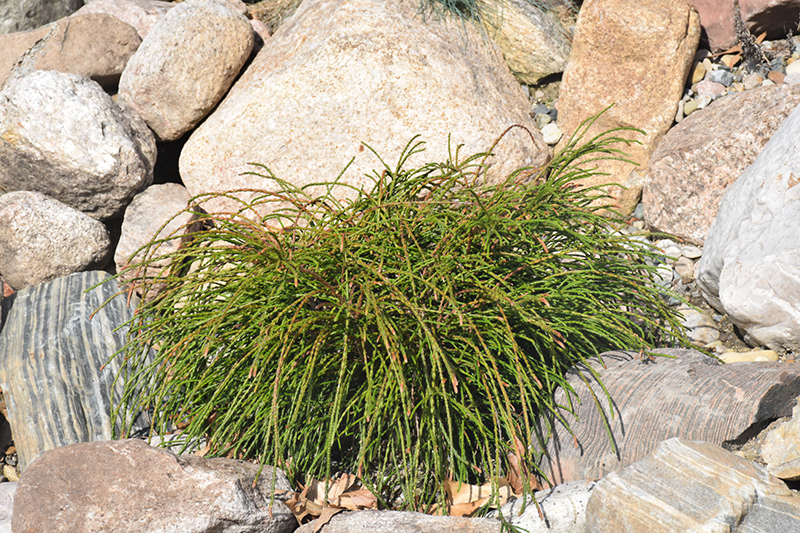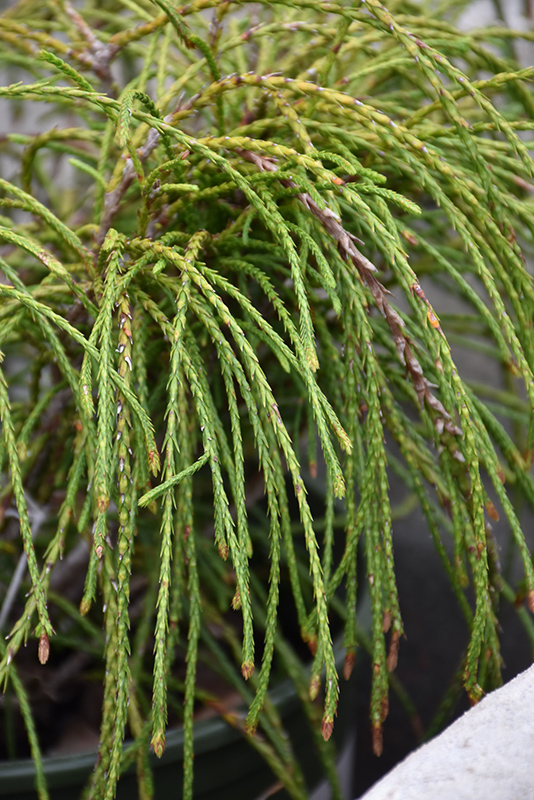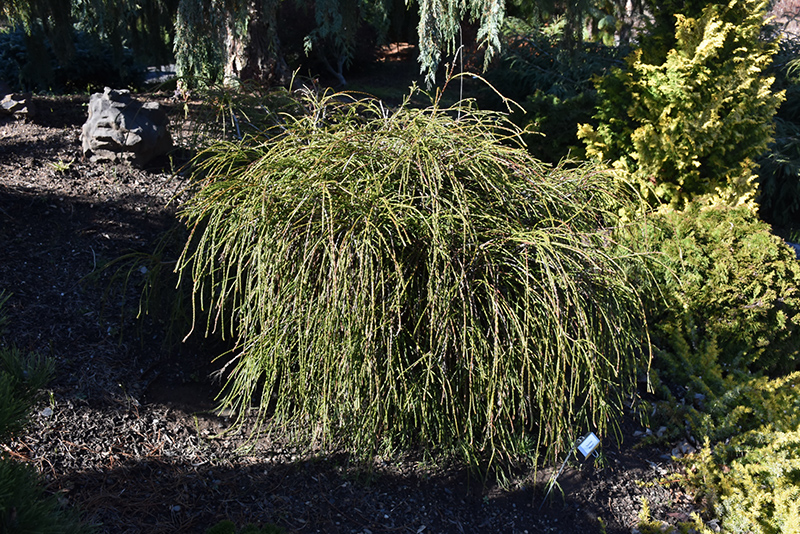Plant Finder
Whipcord Arborvitae
Thuja plicata 'Whipcord'
Height: 5 feet
Spread: 5 feet
Sunlight:
![]()
![]()
Hardiness Zone: 4
Other Names: Giant Arborvitae, Western Red Cedar
Description:
A real gem of an evergreen shrub, forming a compact mound; features long green foliage that archs downward like hanging cords; ideal for use as an interesting detail accent in the shrub or rock garden; performs best in moist locations
Ornamental Features
Whipcord Arborvitae is a dwarf conifer which is primarily valued in the landscape or garden for its cascading habit of growth. It has rich green evergreen foliage. The scale-like sprays of foliage turn an outstanding coppery-bronze in the fall, which persists throughout the winter.
Landscape Attributes
Whipcord Arborvitae is a dense multi-stemmed evergreen shrub with a shapely form and gracefully arching branches. It lends an extremely fine and delicate texture to the landscape composition which can make it a great accent feature on this basis alone.
This is a relatively low maintenance shrub. When pruning is necessary, it is recommended to only trim back the new growth of the current season, other than to remove any dieback. It has no significant negative characteristics.
Whipcord Arborvitae is recommended for the following landscape applications;
- Mass Planting
- Hedges/Screening
- Rock/Alpine Gardens
- General Garden Use
Planting & Growing
Whipcord Arborvitae will grow to be about 5 feet tall at maturity, with a spread of 5 feet. It tends to fill out right to the ground and therefore doesn't necessarily require facer plants in front, and is suitable for planting under power lines. It grows at a slow rate, and under ideal conditions can be expected to live for 50 years or more.
This shrub does best in full sun to partial shade. It prefers to grow in average to moist conditions, and shouldn't be allowed to dry out. It is not particular as to soil type or pH. It is somewhat tolerant of urban pollution, and will benefit from being planted in a relatively sheltered location. Consider applying a thick mulch around the root zone in winter to protect it in exposed locations or colder microclimates. This is a selection of a native North American species.








